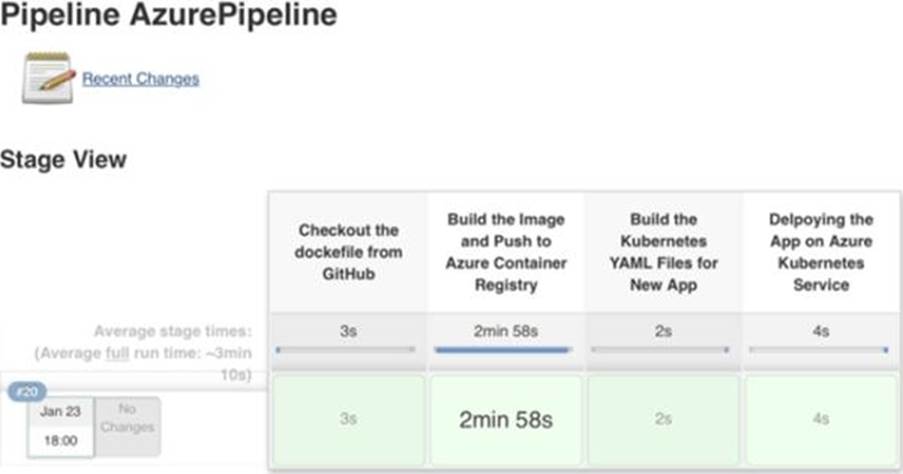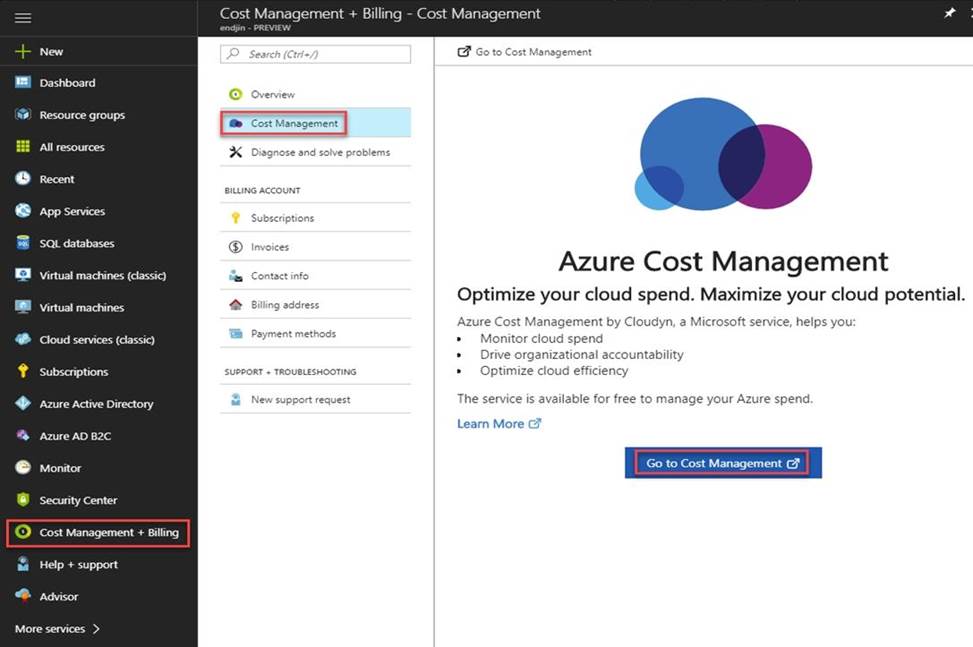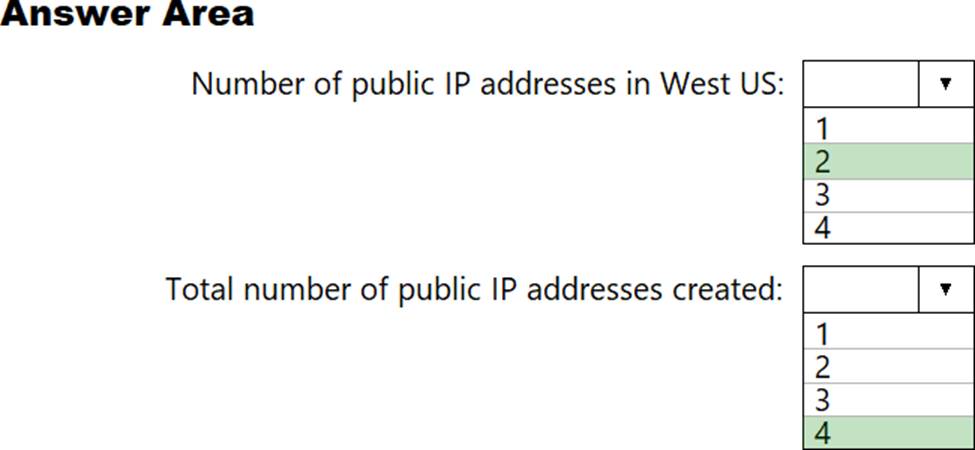Microsoft AZ-303 Microsoft Azure Architect Technologies Online Training
Microsoft AZ-303 Online Training
The questions for AZ-303 were last updated at Dec 21,2025.
- Exam Code: AZ-303
- Exam Name: Microsoft Azure Architect Technologies
- Certification Provider: Microsoft
- Latest update: Dec 21,2025
You create an Azure Kubernetes Service (AKS) duster and an Azure Container Registry.
You need to perform continuous deployments of a containerized application to the AKS cluster as soon as the image updates in the registry.
What should you use to perform the deployments?
- A . an Azure Pipelines release pipeline
- B . an Azure Automation runbook
- C . an Azure Resource Manager template
- D . a kubectl script from a CRON job
You have an Azure virtual network that contains a subnet named Subnet1. Subnet1 contains 50 virtual machines. Twenty-five of the virtual machines are web servers and the other 25 are application servers.
You need to filter traffic the web servers and the application servers by using application security groups.
Which additional resources should you provision?
- A . Azure Private Link
- B . a network security group (NSG)
- C . a user-defined route
- D . Azure-firewall
Note: This question is part of series of questions that present the same scenario. Each question in the series contains a unique solution that might meet the stated goals. Some question sets might have more than one correct solution, while others might not have a correct solution.
After you answer a question in this section, you will NOT be able to return to it. As a result, these questions will not appear in the review screen.
You have an Azure Cosmos DB database that contains a container named Container1. The partition key for Container1 is set to /day.
Container1 contains the items shown in the following table.
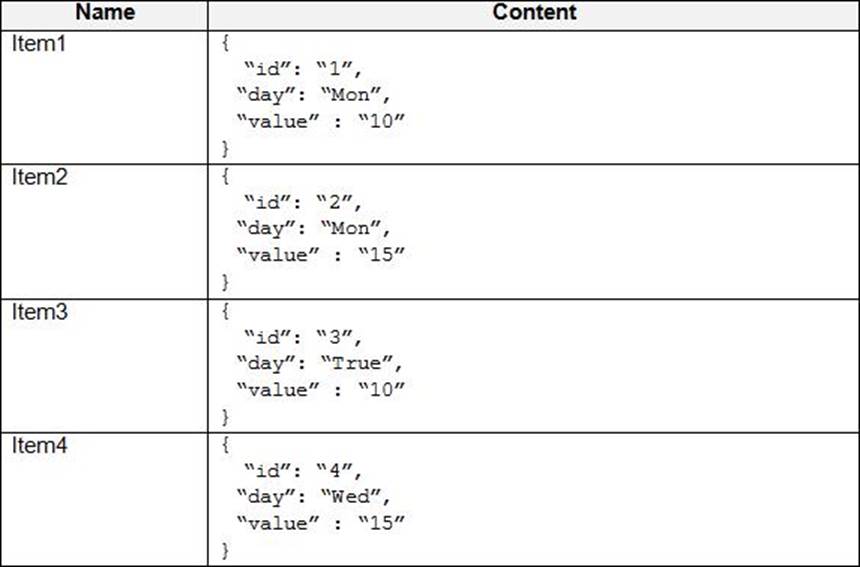
You need to programmatically query Azure Cosmos DB and retrieve item1 and item2 only.
Solution: You run the following query.
![]()
You set the EnableCrossPartitionQuery property to True.
Does this meet the goal?
- A . Yes
- B . No
DRAG DROP
You are designing a solution to secure a company’s Azure resources. The environment hosts 10 teams. Each team manages a project and has a project manager, a virtual machine (VM) operator, developers, and contractors.
Project managers must be able to manage everything except access and authentication for users. VM operators must be able to manage VMs, but not the virtual network or storage account to which they are connected. Developers and contractors must be able to manage storage accounts.
You need to recommend roles for each member.
What should you recommend? To answer, drag the appropriate roles to the correct employee types. Each role may be used once, more than once, or not at all. You may need to drag the split bar between panes or scroll to view content. NOTE: Each correct selection is worth one point.
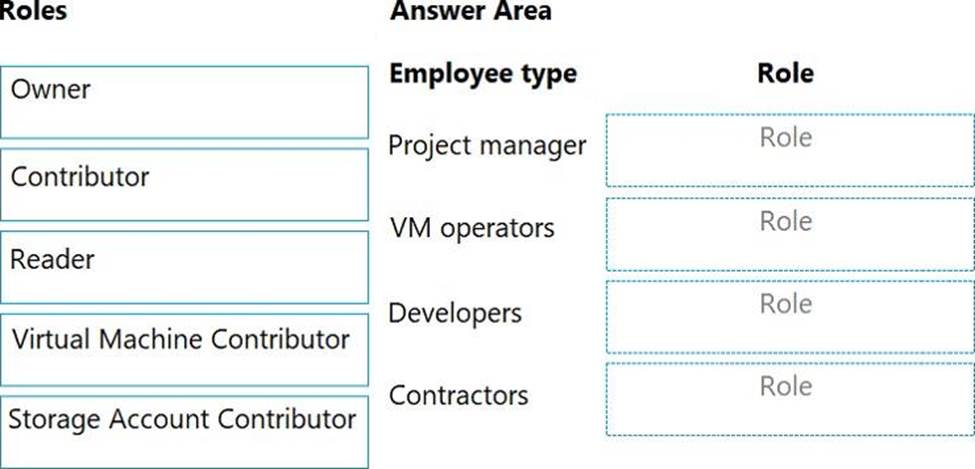
You have an Azure subscription named Subscription1 that is used by several departments at your company.
Subscription1 contains the resources in the following table.
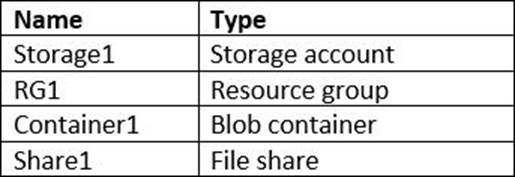
Another administrator deploys a virtual machine named VM1 and an Azure Storage account named Storage2 by using a single Azure Resource Manager template.
You need to view the template used for the deployment.
From which blade can you view the template that was used for the deployment?
- A . Container1
- B . VM1
- C . Storage2
- D . RG1
You have an Azure subscription that contains the storage accounts shown in the following table.
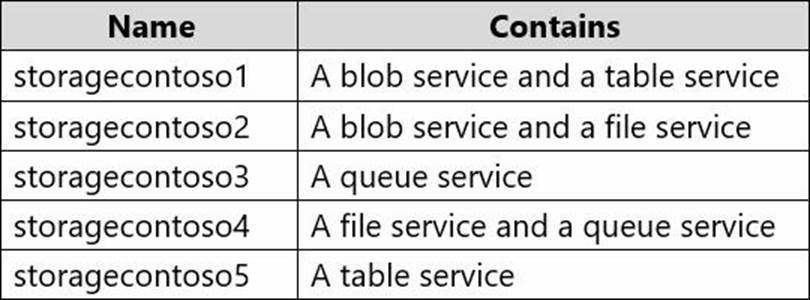
You enable Azure Advanced Threat Protection (ATP) for all the storage accounts.
You need to identify which storage accounts will generate Azure ATP alerts.
Which two storage accounts should you identify? Each correct answer presents part of the solution. NOTE: Each correct selection is worth one point.
- A . storagecontoso1
- B . storagecontoso2
- C . storagecontoso3
- D . storagecontoso4
- E . storaaecontoso5
You have an Azure subscription that contains a resource group named RG1. RG1 contains multiple resources.
You need to trigger an alert when the resources in RG1 consume $1,000 USD.
What should you do?
- A . From Cost Management + Billing, add a cloud connector.
- B . From the subscription, create an event subscription.
- C . From Cost Management + Billing create a budget.
- D . From RG1, create an event subscription.
Your company has the groups shown in the following table.

The company has an Azure subscription that contains an Azure Active Directory (Azure AD) tenant named contoso.com.
An administrator named Admin1 attempts to enable Enterprise State Roaming for all the users in the Managers group.
Admin1 reports that the options for Enterprise State Roaming are unavailable from Azure AD.
You verify that Admin1 is assigned the Global administrator role.
You need to ensure that Admin1 can enable Enterprise State Roaming.
What should you do?
- A . Enforce Azure Multi-Factor Authentication (MFA) for Admin1.
- B . Purchase an Azure AD Premium P1 license for each user in the Managers group.
- C . Assign an Azure AD Privileged Identity Management (PIM) role to Admin1.
- D . Purchase an Azure Rights Management (Azure RMS) license for each user in the Managers group.
Note: This question is part of a series of questions that present the same scenario. Each question in the series contains a unique solution that might meet the stated goals. Some question sets might have more than one correct solution, while others might not have a correct solution.
After you answer a question in this section, you will NOT be able to return to it. As a result, these questions will not appear in the review screen.
You have an app named App1 that uses data from two on-premises Microsoft SQL Server databases named DB1 and DB2.
You plan to move DB1 and DB2 to Azure.
You need to implement Azure services to host DB1 and DB2. The solution must support erver-side transactions across DB1 and DB2.
Solution: You deploy DB1 and DB2 as Azure SQL databases each on a different Azure SQL Database server.
Does this meet the goal?
- A . Yes
- B . No
HOTSPOT
You have an Azure subscription that contains the resource groups shown in the following table.
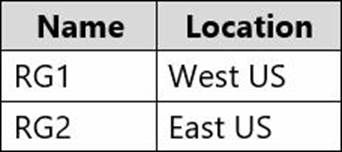
You create an Azure Resource Manager template named Template1 as shown in the following exhibit.
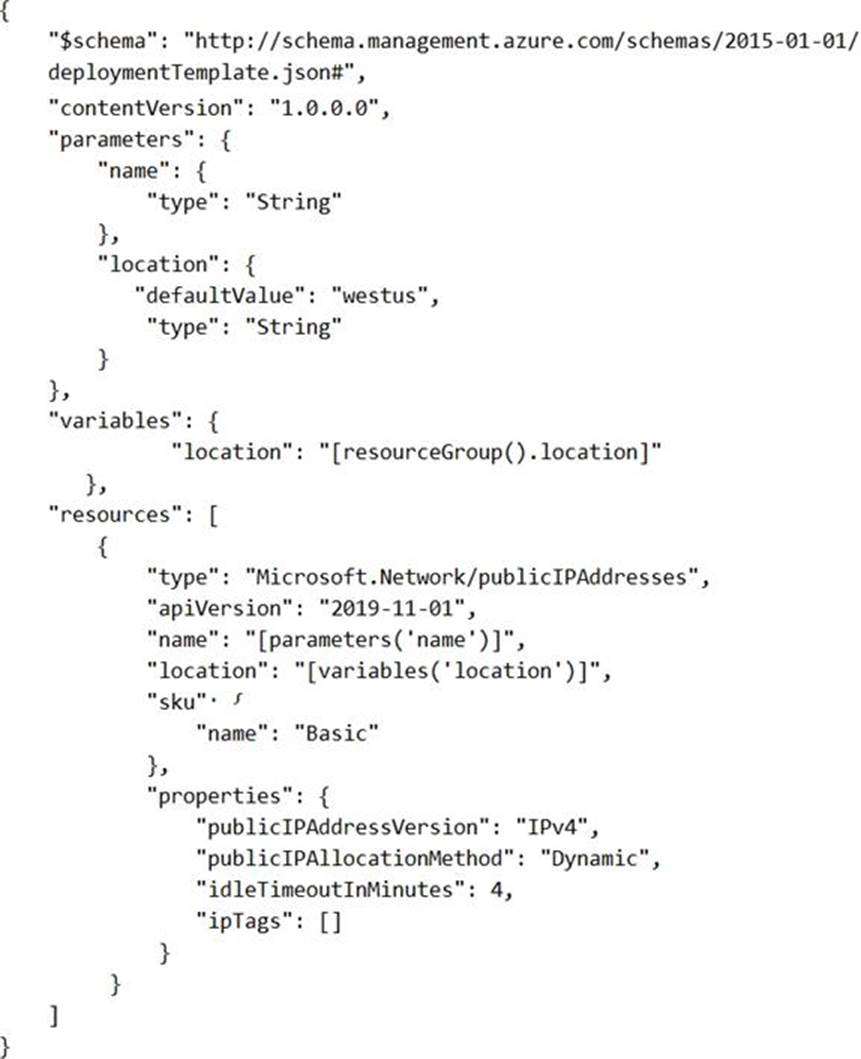
From the Azure portal, you deploy Template1 four times by using the settings shown in the following table.
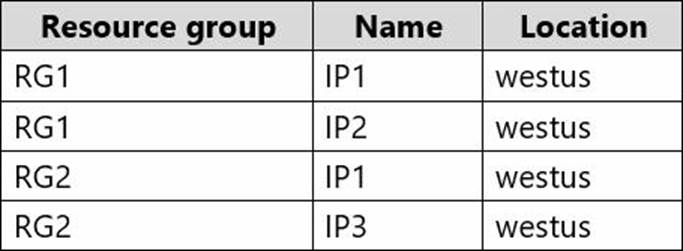
What is the result of the deployment? To answer, select the appropriate options in the answer area. NOTE: Each correct selection is worth one point.
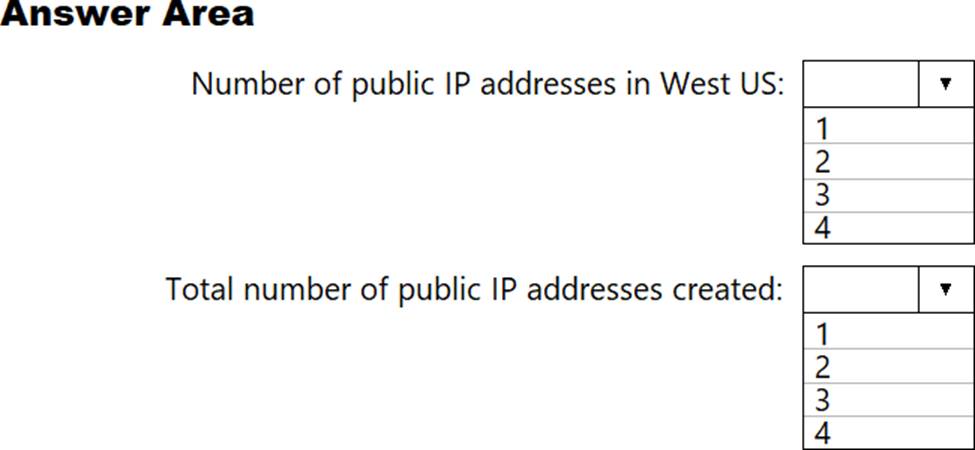
Latest AZ-303 Dumps Valid Version with 206 Q&As
Latest And Valid Q&A | Instant Download | Once Fail, Full Refund

